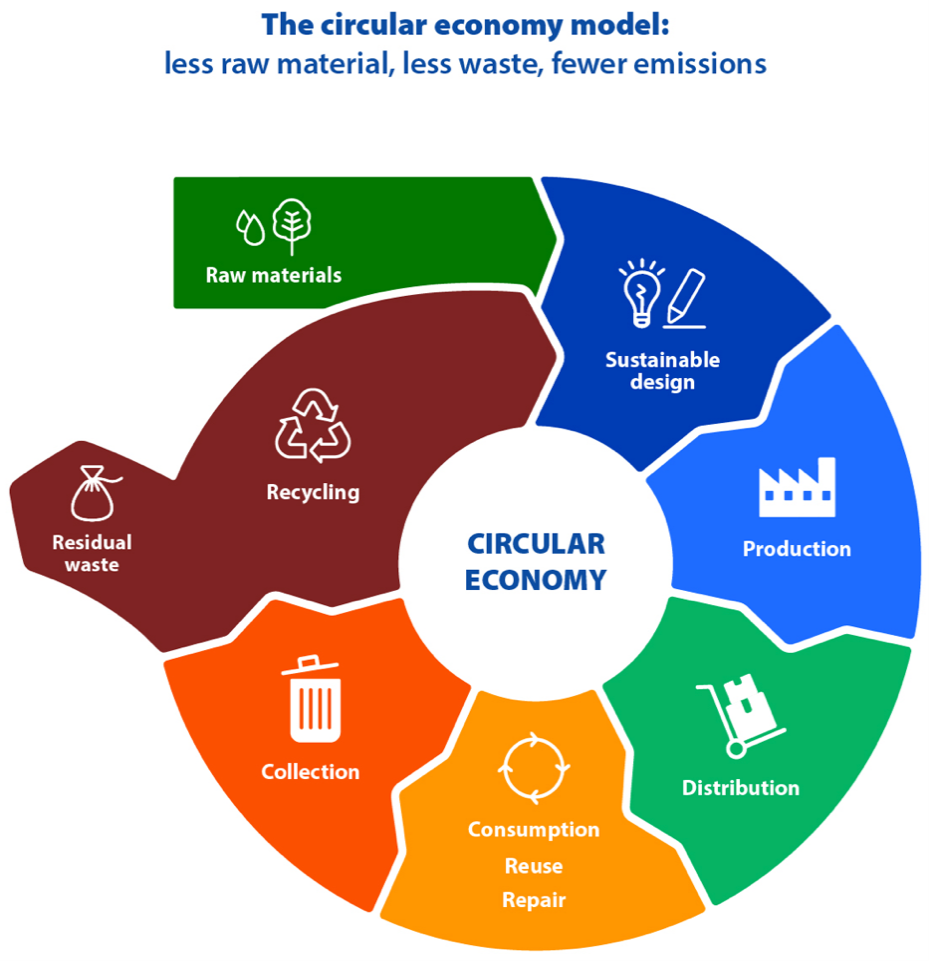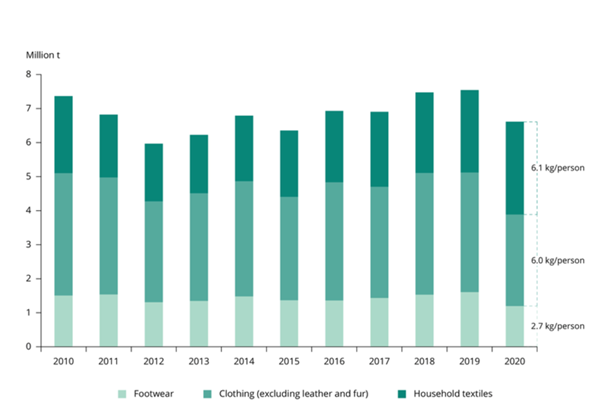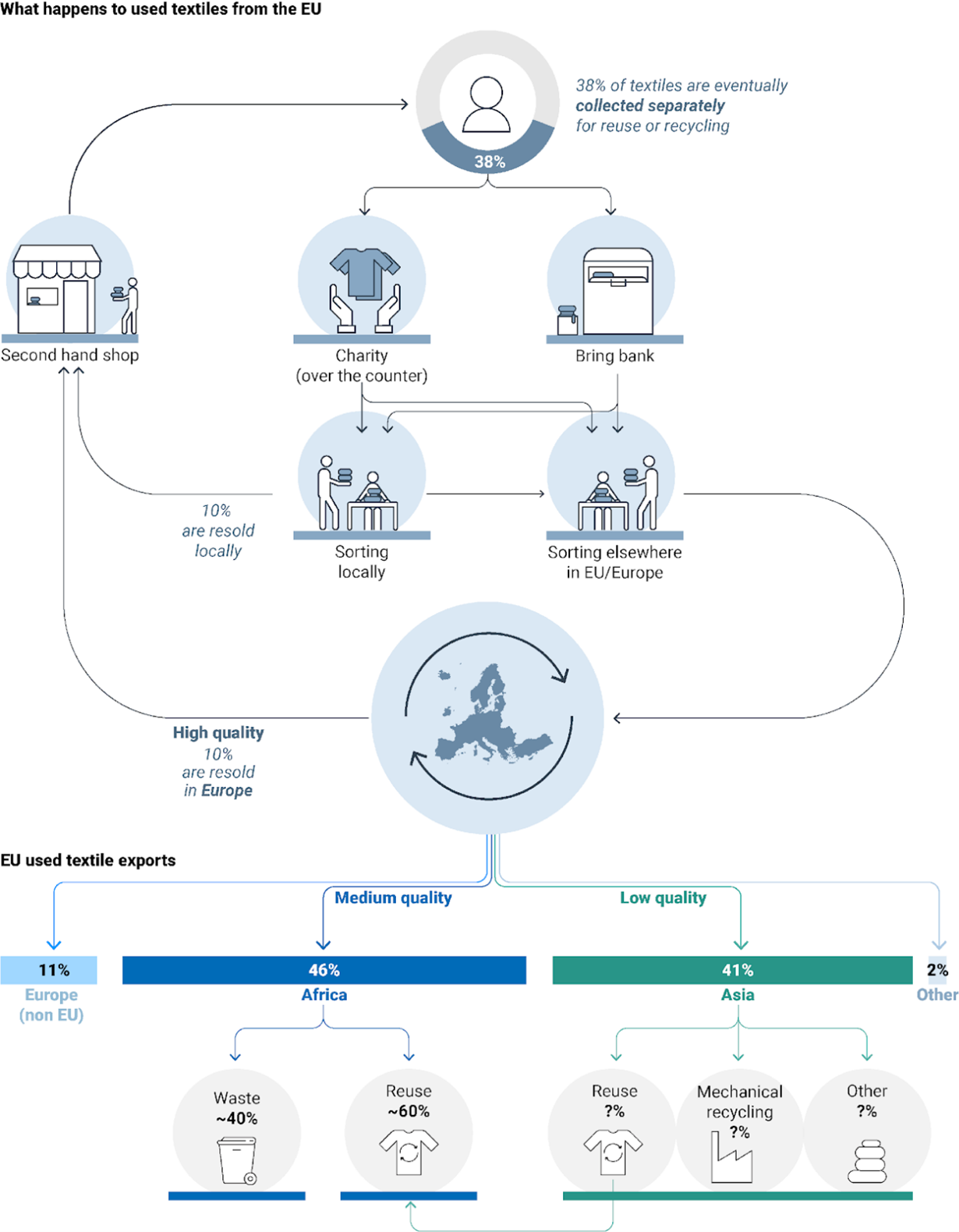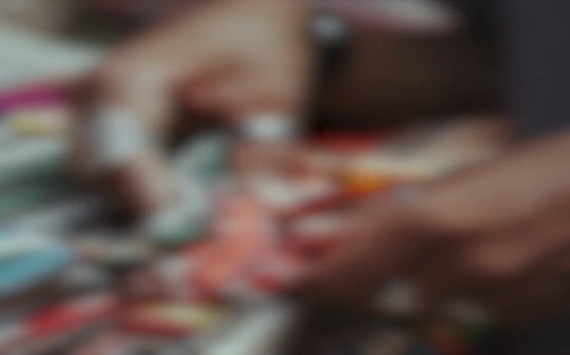
By Sara Fornaro
Climate change and the exploitation of natural resources threaten our existence on this planet. For this reason, despite its obvious limitations, the ecological transition has been placed at the center of political agendas both internationally and at the European level. In 2019, the European Commission has presented a policy plan, known as the “European Green Deal”, which promotes the sustainability of the European Union through three main pillars: decarbonisation by 2050, transition from a linear to a circular economy, and policies that reduce pollution of land, water and soil.
What is the Circular Economy?
An unambiguous definition of circular economy does not yet exist, but we can look at the definition given by the European Parliament: “The circular economy is a model of production and consumption, which involves sharing, leasing, reusing, repairing, refurbishing and recycling existing materials and products as long as possible. In this way, the life cycle of products is extended”.
Another interesting definition is also given by the Ellen MacArthur Foundation , which defines it as “a systems solution framework that tackles global challenges like climate change, biodiversity loss, waste, and pollution. It is based on three principles, driven by design: eliminate waste and pollution, circulate products and materials (at their highest value), and regenerate nature”. According to this definition, the transition to a circular economy would entail “a systemic shift that builds long-term resilience, generates business and economic opportunities, and provides environmental and societal benefits”. These definitions show a production alternative that aims at waste reduction and the recycling and reuse of what has already been produced. This perspective radically changes the standard economy concept of “take, produce, consume and dispose” to “reduce, reuse, recycle and repair”.
Circular Economy Action Plan (CEAP)
In 2020, the European Commission adopted the new Circular Economy Action Plan (CEAP), which aims to promote a modern, circular economy, encouraging the search for new ways of designing products, but also to promote sustainable consumption consciousness, reusing resources and reducing waste. As mentioned in the document, the objective of the Action Plan is to “make sustainable products the norm in the EU, empower consumers and public buyers, focus on the sectors that use most resources and where the potential for circularity is high such as: electronics and ICT, batteries and vehicles, packaging, plastics, textiles, construction and buildings, food, water and nutrients, ensure less waste, make circularity work for people, regions and cities, lead global efforts on circular economy”.

The EU and policies for sustainable fashion
In recent decades, the textile industrial system has pushed towards “fast-fashion” production: which is a way of producing textiles and clothing that is cheap and extremely environmentally and socially impactful. This phenomenon has triggered a “disposable system” causing a high amount of textile waste. In fact, the textile industry is one of the most polluting sectors due to a high consumption of fresh water, groundwater contamination, high CO2 emissions, accumulation of waste that is difficult to dispose of, and finally, the excessive use of chemical and toxic substances that are used in the production and maintenance of textiles.
The European Environment Agency declared that “The amounts of used textiles exported from the EU has tripled over the last two decades from slightly over 550,000 tonnes in 2000 to almost 1.7 million tonnes in 2019” but also that “The amounts of used textiles exported in 2019 was on average 3.8 kilograms per person, or 25% of the approximately 15 kg of textiles consumed each year in the EU”, as we can see in figure 3 (Fig. 3 EU-27 apparent consumption of clothing, footwear and household textiles (excluding fur and leather clothing), 2010-2020, million tonnes and kilograms per person).

In addition, the amount of textiles that cannot be reused in exporting countries ends up in landfills, sometimes the products can be recycled other times this cannot be done mainly due to the uncertainty of the Combined Nomenclature (CN) codes.
For this reason, the EU has tried to turn ‘waste’ textiles into a resource for European countries. In figure 4 (Fig. 4 Flow of used textiles collected in the EU ), we can see the process that happens to most of the secondhand textiles exported to other countries by the EU. Furthermore, the figure shows how most of these used textiles end up 46% in Africa and 41% in Asia.

As described in the Report “Textiles and the environment: the role of design in Europe’s circular economy” of the European Environmental Agency: “From the perspective of European consumption, textiles have on average the fourth highest negative life cycle impact on the environment and climate change, after food, housing and mobility”.
For this reason, in March 2022, the European Commission presented a plan called “EU strategy for sustainable and circular textiles” to address the challenge of textile exports, in line with the objectives of the European Green Deal. The strategy concerns the production and consumption of textiles. On the one hand, this plan attempts to make textile production and consumption more sustainable by empowering producers and consumers. On the other hand, it enhances the textile sector to be more competitive and resilient in the global market.
Within the document, the actions of this strategy are clearly stated, such as:
- set design requirements for textiles to make them last longer, easier to repair and recycle.
- introduce clearer information on textiles and a digital product passport.
- empower consumers and tackle greenwashing by ensuring the accuracy of companies’ green claims.
- stop overproduction and overconsumption and discourage the destruction of unsold or returned textiles.
- harmonize EU Extender Producer Responsibility rules for textiles and economic incentives to make products more sustainable.
- address the unintentional release of microplastics from synthetic textiles.
- address the challenges from the export of textile waste adopt an EU Toolbox against counterfeiting by 2023.
- publish a transition pathway by the end of 2022 – an action plan for actors in the textiles ecosystem to successfully achieve the green and digital transitions and increase its resilience.
The actions target the entire life cycle of products, with the idea of changing the way textile products are made and consumed, making them durable, repairable, and recyclable. The proposal includes various aspects, such as reuse and repair services, which are to be open and available to all consumers. Amongst these actions set by the EU, the European Commission presented a proposal on the 22th of March 2023 for a new directive on “green claims”, to verify the information on sustainability which is provided by the companies. The idea is to create a common set of rules to enable companies to produce with a low environmental impact, but also to enable consumers to recognize products that are truly sustainable and protect them from greenwashing practices.
Fig. 5 This video focuses on sustainable textiles, consumption, and production patterns, with special attention to the role of consumers and producers and how circular practices can make a difference. The themes of the video are on ending fast fashion consumption, durability, reusability, repairing textiles and finding alternatives, going second hand, recycling, upcycling, and fighting greenwashing.

Source: European Commission – Audiovisual Service
ReSet The Trend: the campaign launched by the European Union for young people
The innovations promoted by the European Commission not only concern a new strategy for sustainability and circularity of textiles, but also involve young people. The EU has launched a campaign, called “ReSet The Trend” with the hashtag #ReFashionNow, to make young people active in promoting these values, spreading a new idea of consumption and business, which focuses on the circularity and the longevity of products.
The Commissioner for the Environment, Oceans and Fisheries, Virginijus Sinkevičius, also stated that:
“The world is changing. Producing, using, and then throwing things away is old-fashioned. In our world, it no longer makes economic sense. It’s harming the planet and our health. That’s why Europe has a new strategy for textiles. We want to be part of the solution. We have one goal: that in the long-term only the most sustainable products will reach the market here in Europe. We want everyone to be part of that change and to ReSet the Trend”.

Source: European Commission – Audiovisual Service
European policies are attempting to give attention to the issue of sustainability and there seems to be a greater awareness of the impact of the textile industry within the EU. The proposals put forward by the Commission represent a step forward for a real change in environmental policies at the European level. However, there is still a long way to go in this field. Member States will have to establish rules that follow these legal innovations so that a real ecological transition and a real change can take place.

If you also share these values and wish to participate in the campaign, you can share a photo on your social medias using the ReSet the Trend Filter with the hashtag #RefashionNow and the link to the campaign website.
